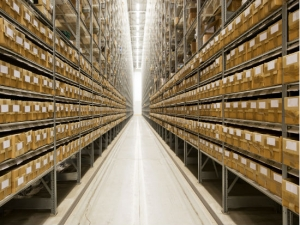 |
| Reviews and Templates for Expression We |
Dematerialization: Make more money, use stuff differently
At Interface, because we manufacture an actual product, and as no one has figured out how to virtualize carpet tiles in the cloud yet, that means dematerialization. How do we fulfill our customers' expectations for our products while using substantially less material (especially those taken from a mine or wellhead) to do it?
Basic dematerialization: Lightweighting your product
Does your product (or packaging) really need to be as tall, thick, wide and heavy as you are making it? This one may seem like a head-slapper, but cannot be underestimated when trying to get skeptical people on board with sustainability at your company.
I heard a story recently from a veteran leader in our manufacturing operation who recalled that Ray Anderson's sustainability message encountered skepticism until 1995, when Interface began experimenting with decreasing the amount of plastic used in our carpet backing. Reducing the plastic in the backing by a single ounce (per square yard) saved the company $1 million in materials that year. Today our average backing weighs 40 percent less than it did in 1995 and we are enthusiastically pursuing additional lightweighting.
Walmart encountered the same initial resistance when it began asking CPG companies for more sustainable packaging. Once companies were assured that making their packaging smaller wouldn't deprive them of valuable shelf space, everyone started watching the material savings add up. Walmart even gave early packaging dematerializers the much coveted "end cap" space to create further incentive. With fewer big packages taking up shelf space (why did the deodorant tube really need to be in a box anyway?), Walmart also could keep more inventory on the shelf and restock less frequently.
Along with energy efficiency improvements, dematerialization can be a breadcrumb trail into understanding sustainability for manufacturers. The savings multiply quickly in a mass production process, so even a small per-unit reduction in materials adds up to the kind of money that wins over skeptics (and finances more complex innovation). The caveat is that the product must work as well as or better than its heavier incarnation. Saving money today by making inferior products doesn't make business or resource productivity sense.
Intermediate dematerialization: Lightweighting your footprint
Reducing the overall amount of material used to make your product saves money, but may or may not have a huge impact on your environmental footprint. The big progress comes when you dematerialize the materials that have the biggest lifecycle footprint.
 Reducing the amount of nylon and switching to recycled nylon makes a big difference in the footprint of carpeting.
Reducing the amount of nylon and switching to recycled nylon makes a big difference in the footprint of carpeting.
For example, Interface could have gone on reducing the weight of our carpet tile backing without taking a huge chunk out of our environmental footprint, because the production of nylon yarn (the part you step on) consumes most of the resources required to make carpet. Life Cycle Assessment showed us that the footprint of nylon production is up to five times greater than that of most other common plastics. This insight led us not only into investments in nylon recycling, but also into researching how to get the same performance with less nylon.
We introduced a product in the late 1990s that had no nylon face fiber as part of this R&D (it was eventually discontinued for other reasons). The current state-of-the-art product, Biosfera Micro, uses a "microtufting" technique perfected by our European business/a> to produce the lowest-footprint nylon-tufted carpet tile in the world. The small amount of nylon it does use is 100 percent recycled, mostly from old carpet and fishing nets.
If we reduced the weight of our products by using less of a low-footprint filler ingredient such as limestone powder, it would make little difference in reducing our impacts. Instead, we have taken the opposite tack and used as much filler and as little plastic in our backing as product performance will allow.
Not all materials are created in equally resource-intensive ways, so do your homework, including life cycle assessment, and dematerialize the ones that matter most.
Advanced dematerialization: Beyond stuff
TThe new frontier of dematerialization moves beyond the idea that making more money requires making and selling more stuff (all of which has to come from somewhere on our finite planet).
 Leased products can spend more time in use, making sure all those resources aren't just sitting there.
McKinsey and Company's new book, "Resource Revolution: How to Capture the Biggest Business Opportunity in a Century," points out the proliferation of service-based business models emerging in traditionally resource-intensive industries from agriculture to automobiles.
Leased products can spend more time in use, making sure all those resources aren't just sitting there.
McKinsey and Company's new book, "Resource Revolution: How to Capture the Biggest Business Opportunity in a Century," points out the proliferation of service-based business models emerging in traditionally resource-intensive industries from agriculture to automobiles.
When large automakers are buying up car-share businesses and describing themselves as "transportation companies" rather than car manufacturers, you know something big is afoot. If the resources used to manufacture a car are wasted 95 percent of the time (while you're not driving it), there exists a huge business and environmental opportunity to improve resource productivity. What if cars and other resource-intensive products could be put into use 60 or 70 percent of the time?
The challenge that remains for these new models is cultural, behavioral and regulatory more than technological or financial. When customers can be convinced to change their behaviors and regulations that were developed for the old models can be adjusted, businesses such as AirBnB and Zipcar (and a host of others) have shown the ability to dramatically increase the productive use of our existing assets, resulting in both environmental and financial benefits.
At Interface, this took the form of the Evergreen Service Agreement, which attempted to create the world's first carpet tile leasing and maintenance program in the late '90s. We tried to sell the service of beautiful, soft, acoustically superior surface underfoot, rather than just making and selling carpet tile. The Evergreen agreement also stipulated that we always would receive our product back at end-of-life. Safe to say we were ahead of our time, as Anderson explained in his last book, with behavioral, regulatory and accounting obstacles ultimately too much for Evergreen to overcome. If you're going to ask your customer to change how they acquire your product or service, you better have all the other obstacles resolved, and we didn't.
Today, the marketplace is becoming friendlier to this kind of innovation. Sophisticated on-line platforms such as a href="http://www.planetreuse.com">Planet Reuse make building product reuse possible in real time and establish that carpet has residual value at the end of a lease.
With a few more changes and the right partners, Evergreen may yet help us show the world that even a carpet tile manufacturer can perform the ultimate feat of dematerialization: making your product (as such) disappear.
|
|
|
|
Copyright 2011 Energy and Technical Services Ltd. All Rights Reserved. Energyts.com |
